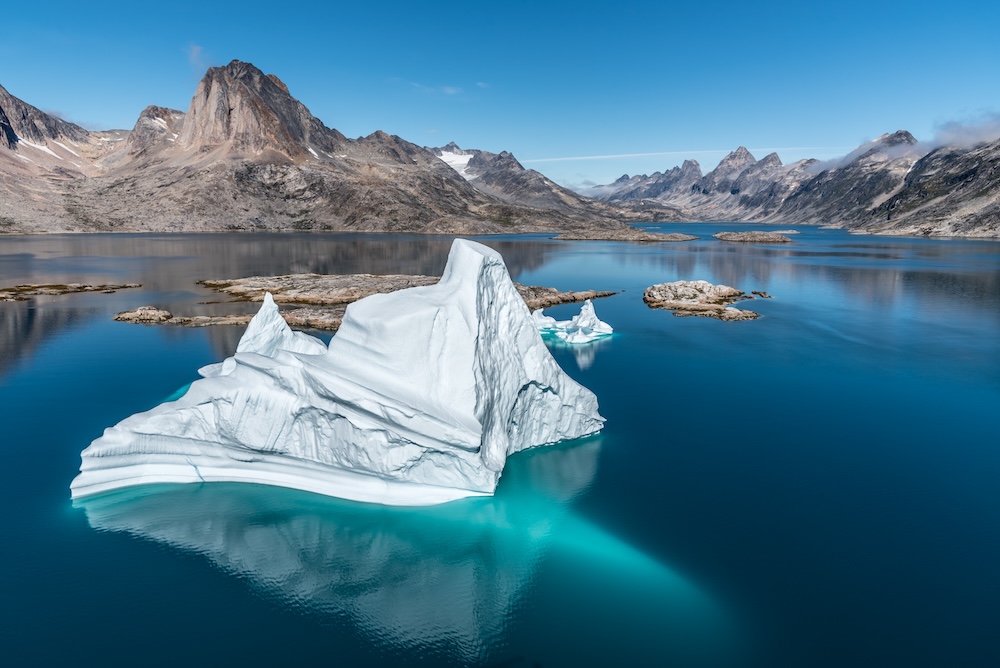A hidden flood. A fractured ice sheet. A warning from the deep.
In 2014, something wild happened under Greenland’s icy surface — and nobody noticed. Not right away, anyway.
It took nearly a decade for scientists to realize that more than 24 billion gallons of water had violently burst upward from beneath the Greenland ice sheet. That’s the equivalent of Niagara Falls running at full power for nine hours straight — but happening in total silence under 300 feet of ice.
The most shocking part? The flood didn’t drain out like typical meltwater. It punched through the ice, blasting upward with enough force to leave a crater nearly a square mile wide.
“It was so unexpected,” said one of the lead researchers. And that’s putting it mildly.
How Does a Flood Erupt from Under Ice?
Let’s break this down: beneath the Greenland ice sheet are hidden lakes — reservoirs of pressurized meltwater trapped by ice and rock. Normally, these lakes are stable. They sit there, chilling quietly, slowly leaking into glacial streams.
But in this case? One of them exploded upward. Scientists believe a build-up of pressure from geothermal heat and meltwater finally broke through the icy ceiling, triggering an upward discharge powerful enough to create a giant surface crater and crack the surrounding ice.
This type of flood is called a GLOF — Glacial Lake Outburst Flood — and while most GLOFs drain downward, this one redefined the rules.
This Wasn’t in the Climate Models
Greenland’s ice sheet isn’t just some faraway frozen plateau. It’s one of the most important regulators of sea level on Earth. If it melts entirely, global sea levels could rise by over 20 feet.
Scientists already knew Greenland was in trouble. But this flood? It revealed that things might be worse than expected. Why?
- It proved meltwater can be stored and released in unpredictable ways
- It showed that entire sections of ice can fracture from below — not just from surface melting
- It highlighted a gap in our current climate models, which don’t fully account for upward water discharges
Translation: there may be more of these hidden time bombs beneath the ice. And we’re just now learning how to spot them.
Can Hidden Glacial Floods Speed Up Sea Level Rise?
Potentially — yes.
The flood itself didn’t raise the ocean significantly. But what it represents is a new, unstable mechanism for ice destabilization. And instability is what leads to collapse.
If pressurized subglacial lakes continue to erupt, they could:
- Undermine ice sheet stability
- Speed up ice loss
- Accelerate meltwater runoff into the ocean
Even scarier? We don’t know how many of these lakes exist. And we didn’t even know this one existed until the crater was found years after the flood occurred.
Why This Should Matter to People Now
You might be thinking, “Cool science story, but what does this have to do with me?”
A lot, actually. Because every new crack in Greenland’s ice is a warning shot for coastlines around the world. And as we’ll cover in the next post, scientists are now warning that some coastal homes could be underwater by 2050.
Greenland’s ice isn’t just melting — it’s becoming more chaotic. That means:
- Models for sea level rise need updating
- Coastal cities and homes need to prepare for shifting timelines
- Property values, insurance, and infrastructure decisions are all affected
The Ice Is Trying to Tell Us Something
For decades, scientists believed glacial melt would be slow and steady — like watching an ice cube shrink in a glass. But this flood shows that the ice has more tricks up its sleeve.
Water isn’t just seeping. It’s pressurizing, lurking, and blasting upward when we least expect it.
Think of it like plumbing. If your pipes are cracked and pressurized from below, the leak doesn’t always come from where you’re watching. Sometimes, it explodes through the floor.
And Greenland’s floor just burst open.
Final Thoughts
We’re entering an age of climate plot twists — where even the coldest, oldest places on Earth are changing in unpredictable ways. Greenland’s hidden flood is a message from the ice itself:
There’s more going on beneath the surface than we realize. And by the time it erupts, it might be too late to stop the water from coming.
Stay tuned for the next post in this series — where we connect this event to a very real and personal threat: your home.









Reader Interactions